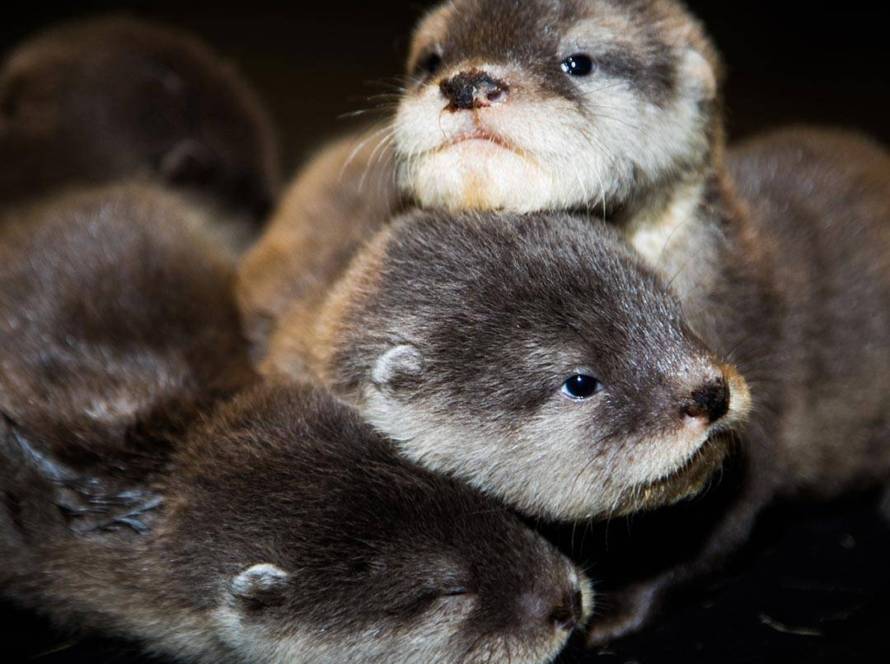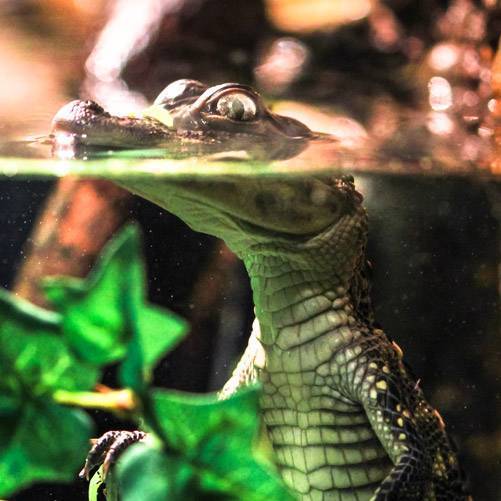Curious About Bearded Dragons
The Bearded Dragon, scientifically known as Pogona, is a species of lizard that lives mainly in the hot and arid regions of Australia. These reptiles live in deserts and are also suitable for keeping at home.
What Does a Bearded Dragon Look Like?
- Characteristic Appearance: Bearded dragons have “beard”-like spiny projections from which they get their name. These ridges are more prominent, especially on males, and can expand when threatened.
- Size: On average, they can grow up to 40-60 cm in length, about half of which is made up of their tail.
- Color Variation: Bearded dragons can vary in color depending on environmental factors and temperature changes. They are usually covered with various patterns in sand, earth and rock colors.
How to Feed Bearded Dragons?
Bearded dragons follow an omnivorous diet. This means that they consume both animal and plant foods. Hatchlings should be fed a predominantly carnivorous diet (e.g. mealworms) until they are one year old. After the age of one year, meat and plant foods should be balanced. The animal part of their diet can include various insects, worms and occasionally small mammals. These protein sources are especially important for young and developing bearded dragons. Their plant-based diet consists of a variety of vegetables, leaves and fruits. These foods provide fiber and essential vitamins.
How to Hunt Bearded Dragons?
- Observing Prey: Bearded dragons rely on visual cues to catch their prey. When they spot a moving prey, they move quickly.
- Fast Catching: They use fast and sudden movements to catch their prey. By making a sudden leap towards their prey, they catch them and consume them immediately.
Hunting Behavior
- Stealth and Patience: In the wild, bearded dragons can be patient and careful when waiting for prey. Sometimes they remain motionless for long periods of time, waiting for an ideal prey to pass by.
- Active Hunting Domestic bearded dragons are usually active during feeding times and will curiously follow their food. This helps them to maintain their natural hunting instincts.
- Omnivorous Diet: Bearded dragons feed on a variety of insects, worms, small mammals and various plant material.
- Effective Hunters: They are agile and can move quickly, making them effective hunters. Their eyesight is very keen and they can spot their prey from long distances.
How Bearded Dragons Reproduce
- Mating Period Bearded dragons usually mate in spring and summer. This period is characterized by rising temperatures and an abundance of food sources.
- Interaction and Marking: Male bearded dragons exhibit a distinctive nodding behavior to impress female bearded dragons. These rituals are used to attract the attention of females and show their desire to mate.
Spawning and Incubation
- Egg Laying Female bearded dragons lay their eggs within a few weeks after mating. They can usually lay between 15-30 eggs.
- Incubation Process: Eggs are buried under sand or soil and go through an incubation process that lasts an average of 60-70 days. The incubation period may vary depending on environmental temperature and humidity conditions.
Development of Bearded Dragon Cubs
Egg Hatching
- After Incubation After hatching from their eggs, the chicks immediately begin to move independently. At the moment of hatching, the chicks have a high degree of independence and survival skills.
Growth and Maturation
- First Weeks and Months: Puppies grow rapidly during their first weeks. During this period, a high-protein diet is critical for their growth and development.
- Sexual maturity: Bearded dragons usually reach sexual maturity around 1-2 years of age. This process can vary depending on the quality of their diet and environmental conditions.
Curiosities About Care as a Pet
- Life Expectancy Pet bearded dragons can live 10-15 years under proper care and feeding conditions. UVB light, the right temperature and nutrition are important for a healthy life.
- Health Checks and Care: Regular veterinary check-ups and the right habitat set-up are essential for this species to live a healthy and happy life. Particular attention should be paid to skin health and the digestive system.
- The Bearded Dragon as a Pet: Bearded dragons are very popular as pets. They are preferred for their social nature and ease of care.
- Habitat Setup: For a pet bearded dragon, a specialized terrarium with temperature and lighting control is required.
- Nutrition and Health: A regular and balanced diet is important for their health. Adequate exposure to UV light and warmth is essential for healthy bone development.
Frequently Asked Questions About Bearded Dragons
- What is a suitable terrarium for a Bearded Dragon? A 100x50x50 cm aquarium is ideal. Spot light should be used to create heated zones and cool areas. Specially produced sands should be preferred as the base material.
- How big does a Bearded Dragon grow? An adult bearded dragon can reach a length of about 40-60 cm
- At what temperature should the Bearded Dragon be kept? The warm part of the terrarium should be 35-40°C and the cool part should be 25-30°C.
- Does the bearded dragon get along with other pets? They usually prefer to live alone; their interactions with other animals should be carefully monitored
Emaar Aquarium and Underwater Zoo is home to many animal species. This aquarium, which also has many fish species, will take you on a pleasant journey through the underwater world. You can visit our website for Emaar Aquarium ticket prices and detailed information.




